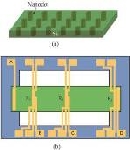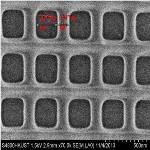Nanoengineered silicon for efficient direct thermal-electrical energy interconversion


Objective
To develop high-performance Si-based thermoelectric materials for efficient thermal-electrical energy conversion and thermal sensing.
Approach
By introducing quantum dots into Si matrix to form nanocomposite, electron and phonon transport in the matrix can be decoupled and the thermal and electrical transport properties can then be optimized simultaneously.
Impact
High-performance thermoelectric materials require a low thermal conductivity but a high power factor. Silicon, despite its abundance and high power factor, is not suitable for thermoelectric applications due to its high thermal conductivity. However, the dramatic difference between the phonon and electron mean free paths in silicon provide an opportunity to reduce the thermal conductivity while maintaining the electronic properties by introducing lattice-compatible nanostructues. We propose to nanoengineer silicon with in-situ grown silicide nanostructures to make it an effective thermoelectric material. High-performance silicon-based nanocomposites will be ideal for thermoelectric applications because of their scalability, low toxicity, and low cost. We will also develop a fundamental understanding of the phonon transport and scattering mechanisms in these novel phononic metamaterials. This research will deepen the understanding of phonon behavior in nanostructured materials and guide the design of novel thermoelectrics, which is of both academic and industrial importance.
Contact
Baoling Huang, Associate Professor of Mechanical and Aerospace Engineering
Email: mebhuang@ust.hk